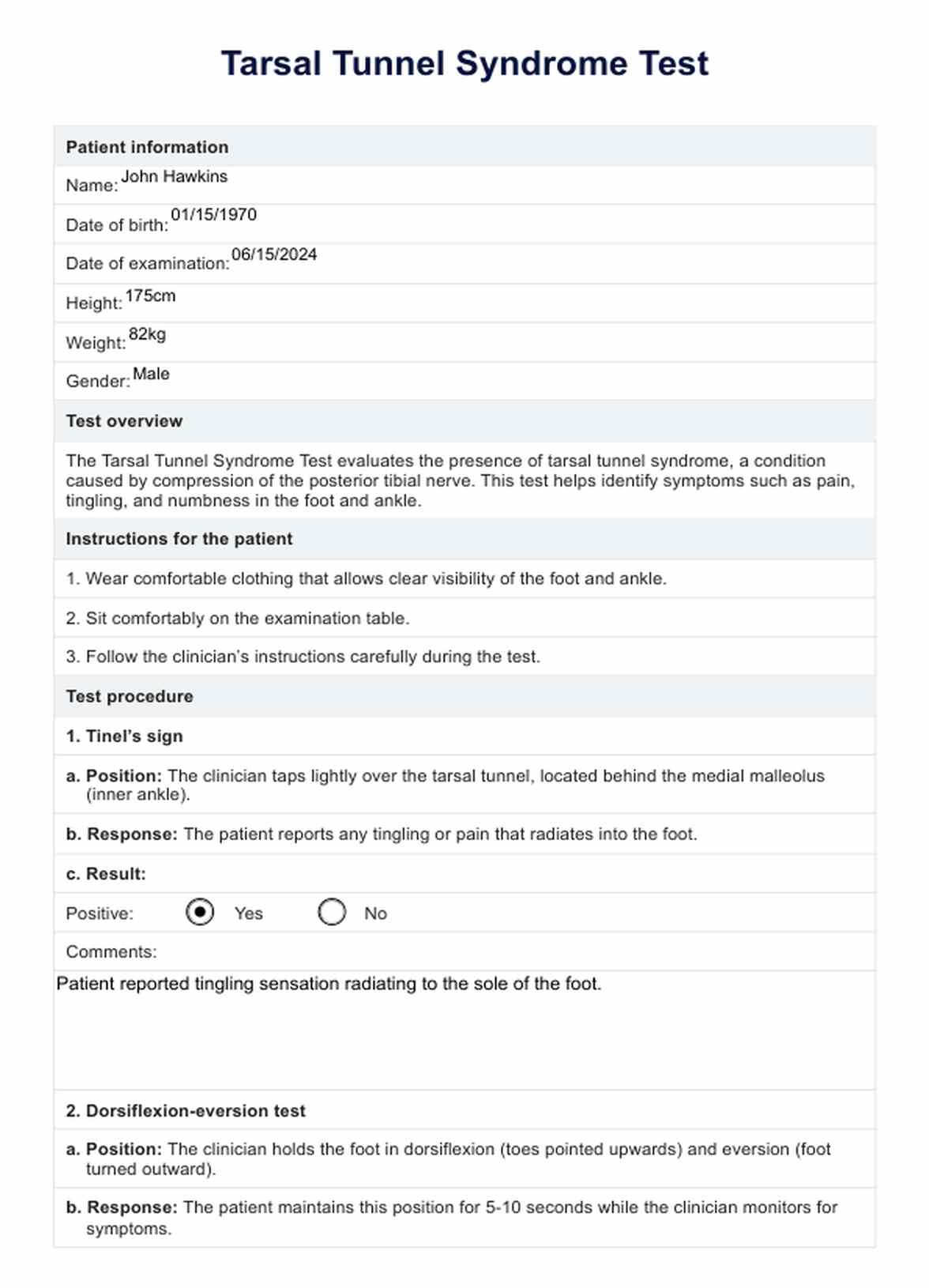When tarsal tunnel syndrome occurs, it typically presents with symptoms such as pain, tingling, burning, and numbness in the foot and ankle. These symptoms often worsen with activity and improve with rest.

Tarsal Tunnel Syndrome Test
Discover the benefits of using Carepatron as your orthopedic software. Learn about tarsal tunnel syndrome, its symptoms, diagnosis, and effective treatments.
Tarsal Tunnel Syndrome Test Template
Commonly asked questions
Diagnosis involves a combination of physical examination, patient history, specific tests such as Tinel’s Sign and the Dorsiflexion-Eversion Test, and imaging studies like MRI to confirm nerve compression.
The tibial nerve, one of the two terminal branches of the sciatic nerve, can be involved in tarsal tunnel syndrome. The sciatic nerve originates from the L4-S3 spinal nerve roots and provides motor and sensory innervation to the posterior leg and foot. Anatomical variations and the course of the sciatic nerve can influence the development of tarsal tunnel syndrome.
EHR and practice management software
Get started for free
*No credit card required
Free
$0/usd
Unlimited clients
Telehealth
1GB of storage
Client portal text
Automated billing and online payments











